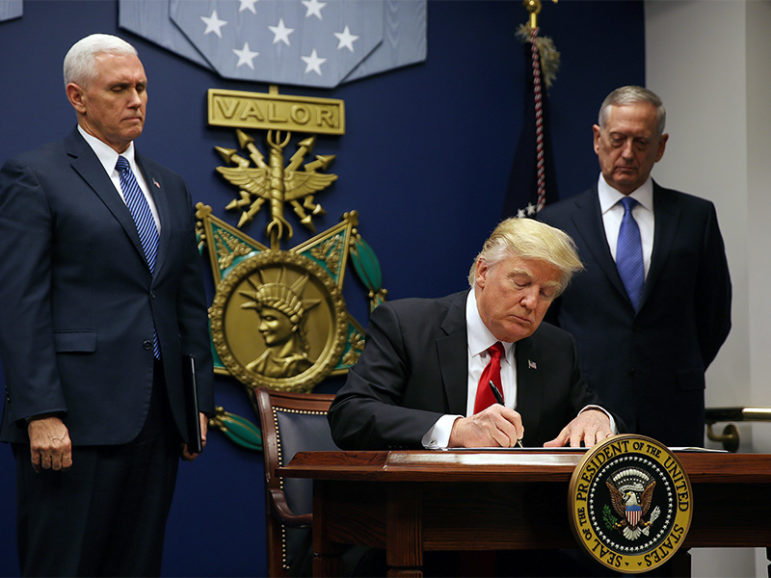In upholding a lower court’s injunction, the Fourth Circuit Court of Appeals used some of the strongest judicial language yet against President Trump’s travel ban.
The ban, wrote Judge Raymond Gregory for the 10-3 majority, “in text speaks with vague words of national security, but in context drips with religious intolerance, animus, and discrimination.”
Bam!
The discriminatory context consists of Trump’s many statements as a candidate and after taking office indicating that his true aim in issuing first one executive order and then the second was to keep Muslims out of the country.
Because of these, said the Court, the ban unconstitutionally violates the First Amendment’s Establishment Clause, which “yet stands as an untiring sentinel for the protection of one of our most cherished founding principles—that government shall not establish any religious orthodoxy, or favor or disfavor one religion over another.”
Bam! Bam!
Proceeding from rhetoric to legal argument, the Court relied on the “purpose prong” of the Lemon Test, that oft-dismissed but not entirely superseded rule that requires a challenged law’s primary purpose to be secular. Not so here:
EO-2 [the second executive order] cannot be divorced from the cohesive narrative linking it to the animus that inspired it. In light of this, we find that the reasonable observer would likely conclude that EO-2’s primary purpose is to exclude persons from the United States on the basis of their religious beliefs.
In a strenuous dissent, Judge Paul Niemeyer claimed that the majority had extended Establishment Clause jurisprudence in an unprecedented way. The executive order is, he wrote, a “modest action…which imposes only a temporary pause of 90 days to assess whether the screening and vetting procedures that are applied to nationals from these high-risk countries are adequate to identify and exclude terrorists.”
If the Supreme Court upholds the Fourth Circuit’s decision, there’s no doubt it will be breaking new legal ground. Never before has the Establishment Clause been used to overturn a president’s congressionally delegated right to control immigration.
But never before has a president spoken out against members of a particular faith as Mr. Trump has. It’s enough to tempt a critic of the Fourth Circuit’s decision to pun, “Bad presidents make bad law.”
Be that as it may, it has been four months since the President issued his first executive order. He has had his 90 days to assess the adequacy of the country’s screening and vetting procedures and then some.
So where’s the assessment?
You’d almost think the primary purpose of the executive order was not national security.






